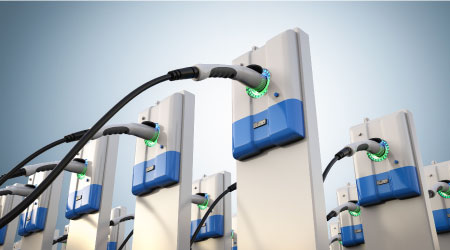
Electric vehicle use is increasing rapidly as adoption becomes more mainstream and as more and more automakers are coming out with electric and hybrid model offerings. Rising gas prices are also contributing to the accelerated demand for electric vehicles.
Additional growth is on the horizon due to the U.S. Infrastructure Investment and Jobs Act enacted in November which includes $7.5 billion to build out a national network of EV chargers across the country. This act is part of a larger national agenda aimed at reducing carbon emissions, which includes a goal to make 50% of all new vehicles sold in the United States zero-emission vehicles by the year 2030.
Now is the time for property managers and owners to plan and prepare for this increased demand. Below are four steps that can be taken to properly prepare a facility for the rapidly increasing demand for electric vehicle charging stations.
Property-Specific Plan
The first step is to develop a property-specific plan for electric vehicle charging that is best-suited for each facility. There are several factors to be considered when researching, developing, and implementing the plan such as property type, location, accessibility, number of parking spaces, tenant requirements, future growth plans, and the existing electrical infrastructure.
Evaluate Existing Infrastructure
The next step is to survey the existing infrastructure to determine what would be required to adapt the existing facility to meet the anticipated and future needs for electric vehicle charging. This will help determine whether the existing electrical infrastructure has the capacity to accommodate the desired quantity of charging stations or if a service upgrade will be required.
Develop a Budget
The third step is to estimate the costs associated with furnishing and installing the electric vehicle chargers as well as any electrical system upgrades that might be required. Determining these costs will be necessary to establish a budget. This is also the time to research financial incentives and rebate programs that may be available.
Timeline for Implementation
The final step is to determine the implementation timeline to anticipate and meet the needs required during each stage. This timeline will allow property owners and managers to meet current demand while anticipating future needs as electric vehicle charging demand continues to rise over time.
With proper planning, property managers and owners can develop a phased and sequenced plan to ensure their facilities can keep up with the demand for electric vehicle charging.

